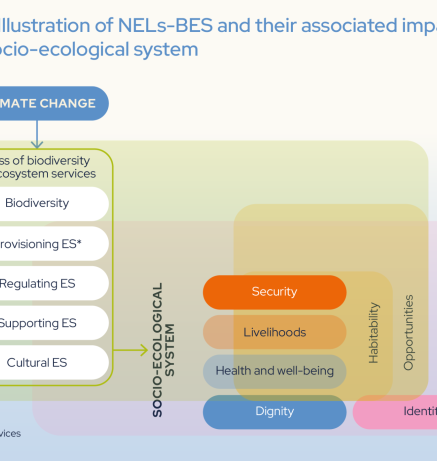|
Publication date: November 2024
|
|
Abstract
This paper explores non-economic losses related to biodiversity and ecosystem services, territory and habitability, and cultural heritage. It addresses their overlapping impacts on socio-ecological systems and provides examples of responses to these losses, drawn from diverse case studies.
The paper first describes how biodiversity and ecosystem service losses cascade beyond ecosystems, affecting livelihoods, security, health, well-being, dignity, and identity. It describes actions to respond to these losses, such as livelihood diversification, community training, nature-based solutions, and ecosystem-based approaches, while noting that these losses should be better integrated into policies, with improved monitoring and engagement of affected communities.
The paper then discusses how the loss of territory and habitability disrupts people's well-being, identity, cultural practices, and social cohesion. It presents three broad types of responses: immediate humanitarian relief, landscape rehabilitation and protection, and planned relocations as a last resort. The paper lays out the critical importance of effective and equitable delivery of finance for humanitarian relief, land restoration, inclusive and participatory decision-making, multi-stakeholder partnerships, awareness raising, and stronger land tenure security in responding to these losses.
Finally, this paper also identifies different losses resulting from the loss of cultural heritage and the value it holds. These losses include the loss of distinctive forms and expressions of identity, accumulated cultural and environmental knowledge, skills related to local resources and livelihoods, traditional forms of governance systems, inspiration and innovation, as well as diminished food and water security and loss of the adaptive capacity and resilience of communities, including their resilience to disaster. The paper discusses the multiple lines of response to these losses, ranging from recognition and monitoring of cultural heritage and its integration into policies and risk management plans to knowledge-sharing and building capacities to enhance cultural resilience.
|




